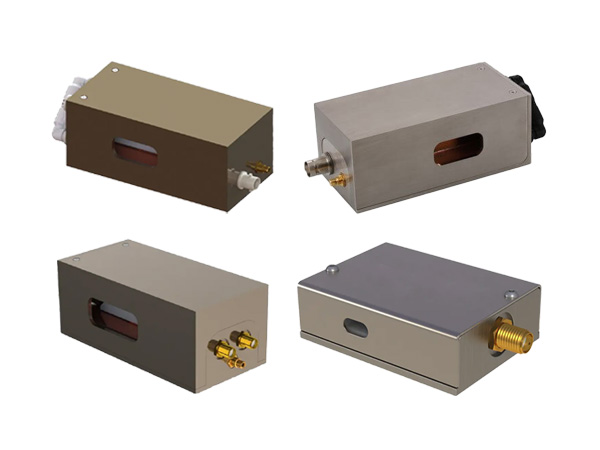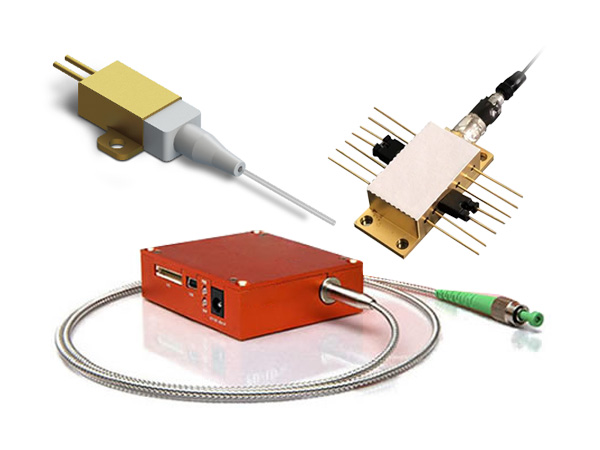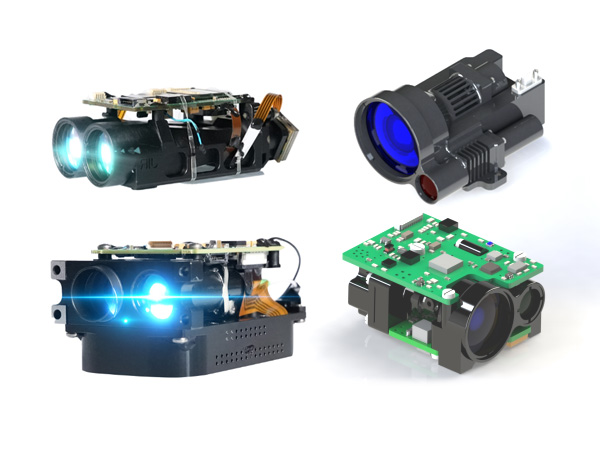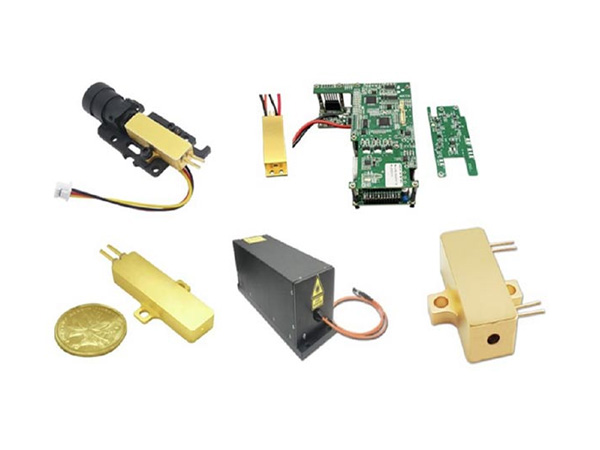Acousto-Optic Modulator (AOM) Market Application Cases and Development Trends

In the evolution of modern optoelectronic technology, the Acousto-Optic Modulator (AOM), with its unique optoelectronic control mechanism, has become a crucial hub connecting laser technology with applications in various fields. This article will start from the working principle of AOM, combine its core characteristics, deeply analyze market application cases, market size, and future development trends, comprehensively demonstrating the technical value and industrial prospects of this device.
I. Core Principles and Technical Characteristics of AOM
(1) Fundamental Mechanism of Acousto-Optic Interaction
The operation of AOM is fundamentally based on the Bragg diffraction effect. When a high-frequency electrical signal drives a transducer (such as a lithium niobate wafer) to generate ultrasonic waves, these ultrasonic waves propagate through an optical medium (such as tellurium dioxide, fused silica). This causes periodic changes in the refractive index of the medium, forming a dynamic "acoustic grating". When a laser beam passes through this medium, it is deflected or its intensity is altered due to the action of the grating, enabling digital modulation (on-off control) and analog modulation (intensity adjustment) of the laser. By precisely controlling the frequency, intensity, and presence of the ultrasonic waves, AOM can achieve a high extinction ratio exceeding 40 dB and an optical rise time as low as 5 ns for high-speed modulation performance.
(2) Key Technical Parameter System
The performance of AOM is defined by multiple dimensions of parameters. In terms of spectral coverage, standard models can support the wavelength range from 240 nm to 2100 nm, and special models can be extended to 5.5 μm. The drive frequency range typically spans from 20 MHz to 350 MHz, with high-frequency models suitable for high-speed communication scenarios. The medium material determines its application boundaries. For example, tellurium dioxide is suitable for the visible to near-infrared band, while germanium-based materials are specialized for the mid-infrared region. In addition, the multi-channel integration technology (AOMC) can achieve independent control of 48 modulation channels or 8 deflection channels, significantly enhancing the processing efficiency in complex application scenarios.
II. Typical Application Scenarios and Market Cases of AOM
(1) Scientific Research and Analytical Instrumentation
In cutting-edge scientific research, spectral analysis demands precise control of laser light sources. For example, an internationally renowned scientific research institution employed a [certain brand] AOM during high-resolution Raman spectroscopy research. The high extinction ratio (> 40 dB) of this AOM ensured clear on-off control of laser pulses, effectively reducing background noise interference during the detection of complex molecular vibration signals. By accurately adjusting the drive frequency of the AOM, researchers could quickly switch laser wavelengths, enabling fine spectral acquisition of different sample areas. This significantly improved experimental efficiency, reducing the analysis time for complex samples from several weeks to just one week, and strongly promoting research on the microstructure of new materials.
(2) Industrial Laser Processing
Laser cutting and welding processes require precise control over laser energy and spot position, which directly determine product quality. Take a large automotive parts manufacturer as an example. It introduced a multi-channel AOM system in the laser welding process of precision metal parts. When welding complex-shaped components, the multi-channel AOM independently modulates multiple laser beams, allowing real-time adjustment of laser energy distribution and spot position according to the weld shape. Compared with traditional welding methods, the welding efficiency increased by more than 30%, and the reject rate was reduced to less than 1%, effectively cutting production costs and enhancing product competitiveness to meet the strict requirements of the automotive industry for high-precision and high-efficiency parts processing.
(3) Communication and Optical Networks
With the pursuit of high-speed and large-capacity data transmission in 5G and future 6G communication technologies, precise modulation of optical signals is of vital importance. In the metro network upgrade project of a major telecommunications operator, an AOM-based optical modulation solution was adopted. The high-speed modulation characteristics of AOM (with a modulation bandwidth of up to 100 MHz) can rapidly convert electrical signals into changes in the intensity or frequency of optical signals, enabling data transmission rates of 400 Gbps or even higher. In long-distance optical fiber communication links, precise phase and intensity modulation of laser light by AOM effectively compensates for issues such as fiber dispersion and loss, ensuring the stability and accuracy of signal transmission over hundreds of kilometers. This provides reliable support for large-scale data center interconnection and high-definition video real-time transmission within urban areas.
(4) Medical Equipment
In laser medical equipment, such as laser ophthalmic surgical devices, AOM plays a crucial role. A leading medical device manufacturer integrated AOM into its new femtosecond laser ophthalmic surgical system. During myopia correction surgery, AOM precisely controls the pulse energy and repetition frequency of the laser to achieve high-precision ablation of corneal tissue. Thanks to the fast response characteristics of AOM (with an optical rise time as low as 5 ns), it can adjust laser parameters in a very short time according to the surgical plan, ensuring that the precision of corneal cutting during the operation reaches the micron level. This significantly improves the safety and effectiveness of the surgery, bringing a better treatment experience to numerous myopia patients.
(5) Intelligent Security and Surveillance
In intelligent security and surveillance systems, AOM can be used for beam deflection control in lidar. A large-scale security project used AOM in its lidar equipment to achieve rapid scanning and monitoring of large areas. By quickly switching the drive signal of AOM, the laser beam can be rapidly deflected in both horizontal and vertical directions, enabling 360° panoramic scanning of the monitored area without blind spots. Compared with traditional mechanically rotating lidar, the scanning speed of AOM-based lidar has increased by more than five times, enabling real-time capture of even tiny moving objects. This greatly improves the timeliness and accuracy of security monitoring, effectively safeguarding the safety of large public places and industrial parks.
(6) Consumer Electronics and Smart Devices
With the trend of miniaturization and intelligence in consumer electronics, the demand for compact and efficient optical components has increased. In the 3D structured light facial recognition modules of some high-end smartphones, miniaturized AOMs are beginning to be applied. AOM is used to modulate the emitted laser beam, achieving rapid acquisition of three-dimensional facial information by quickly changing the phase and intensity of the laser. For example, the 3D facial recognition system of a [certain brand] smartphone, with the help of AOM, can complete high-precision facial scanning and recognition within one second. It maintains a high recognition accuracy even in complex lighting environments, enhancing the convenience and security of user phone unlocking and promoting the upgrade of human-computer interaction experience in consumer electronics products.
III. AOM Market Size and Growth Trends
According to the latest report from MarketsandMarkets, the global Acousto-Optic Modulator market size was approximately [X] billion US dollars in 2023. It is expected to grow at a compound annual growth rate (CAGR) of 8.5% and exceed [X] billion US dollars by 2029. The Asia-Pacific region, driven by rapid development in communication and industrial manufacturing, has become the core growth engine of the market, accounting for nearly 40% of the global market share. The continuous increase in demand for high-speed optical communication and precision laser processing in countries such as China, Japan, and South Korea has strongly stimulated the expansion of the AOM market.
In terms of market segments, the communication field is the largest application market for AOM, accounting for more than 35%. The large-scale deployment of 5G networks and the demand for high-speed optical interconnection in data centers have driven the procurement of high-bandwidth and low-loss AOMs. The industrial laser processing field follows closely, accounting for about 28%. The pursuit of precision processing in industries such as automotive and aerospace has significantly increased the sales of multi-channel AOMs and high-power AOMs. The medical and scientific research fields are also steadily expanding due to technological iterations and equipment renewal needs, with an expected annual growth rate of 7% - 9% in the coming years.
IV. Future Development Trends of AOM
(1) Performance Enhancement
In terms of material innovation, technologies such as aluminum nitride (AlN) piezoelectric thin films are emerging, with the potential to increase the acousto-optic modulation frequency to the 20 GHz level, providing strong support for the construction of 800 Gbps optical communication systems. In the process of broadband response optimization, chirped acoustic wave structure design has become crucial. It can achieve full coverage of the C+L band (1530 - 1625 nm) while reducing the insertion loss to below 0.8 dB, greatly optimizing signal transmission quality.
(2) Integration Development Path
Integration with photonics is an inevitable trend. For example, Intel Labs successfully achieved monolithic integration of acousto-optic modulators with silicon optical waveguides, reducing the device size to 0.1 mm² and the power consumption to 5 mW, significantly improving space utilization and energy efficiency. The hybrid integration technology of lithium niobate on insulator (LNOI) and III-V materials has further increased the modulation efficiency to 3 dB/V·cm, opening up new directions for the research and development of high-performance integrated devices.
(3) Expansion of Emerging Application Scenarios
In the field of space-division multiplexing optical networks, AOM can use the acousto-optic effect to achieve dynamic mode switching between LP01 and LP11, helping to break through the 1 Pbit/s single-fiber capacity limit. Meanwhile, by generating orbital angular momentum (OAM) beams through spiral-phase acoustic waves, it can construct multi-dimensional multiplexing communication systems, further enhancing communication capacity and efficiency. In the field of quantum communication, acousto-optic frequency shifters are used to generate time-frequency entangled photon pairs with a fidelity of up to 99.2%. The dynamic wavelength tuning based on the acousto-optic effect can achieve a scanning rate of 50 MHz/s in the 1550 nm band, providing guarantees for the stability and efficiency of quantum communication.
(4) Intelligence and Energy Efficiency Innovation
With the help of deep learning control, using long short-term memory (LSTM) networks to predict fiber nonlinear effects, real-time adjustment of acousto-optic compensation parameters can be achieved, enabling AI-driven dynamic system optimization and improving system adaptability. By establishing a digital twin model of the device's thermo-mechanical-optical multi-physical fields, the service life prediction accuracy can reach 95%, facilitating proactive maintenance and optimization. In terms of green energy-saving technologies, piezoelectric transducers can recover residual acoustic energy in reverse, increasing the system's energy efficiency ratio by 18%. Superconducting acousto-optic devices have a loss reduced to 1/50 of that at room temperature under 4K conditions, highlighting the advantages of low-temperature operation solutions.
It is expected that by 2026, 400 Gbps acousto-optic modulators will be commercially available, occupying 35% of the data center interconnection market share. By 2028, quantum-enhanced acousto-optic devices will be deployed on a large scale in the quantum internet. By 2030, fully integrated acousto-optic chips will become the standard configuration of optical modules, with costs reduced to 1/5 of the current solutions. By then, AOM will play an even more crucial role in a wider range of fields and reshape the landscape of the optoelectronic industry.
For more information on our AOM, please click here.
 English
English Français
Français Deutsch
Deutsch euskara
euskara Русский язык
Русский язык Italiano
Italiano Português
Português Nederlands
Nederlands Polski
Polski Greek
Greek Lietuva
Lietuva Türkçe
Türkçe 日本語
日本語 한어
한어 中文
中文 தாமில்
தாமில் فارسی
فارسی हिंदी
हिंदी Tiếng Việt
Tiếng Việt ภาษาไทย
ภาษาไทย Pilipino
Pilipino Indonesia
Indonesia தாமில்
தாமில்




